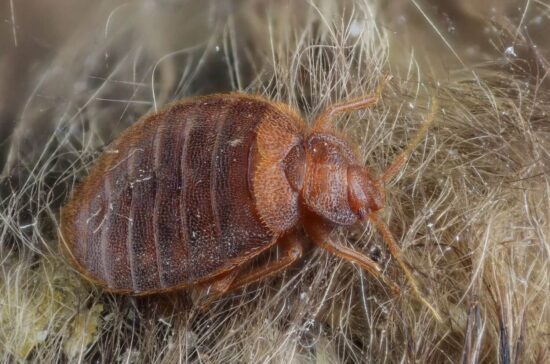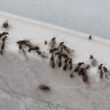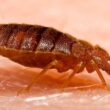Nobody wants to deal with bed bugs, but they’re making a comeback in homes everywhere. The good news? Not all bed bug problems are the same. Understanding the different types of bed bugs can save hundreds of dollars in wrong treatments and help solve the problem faster.
Different types of bed bugs need different approaches. What works for regular bed bugs might fail completely against bat bugs. This guide will help identify exactly what’s crawling around and what to do about it.
The Types of Bed Bugs That Actually Matter
Most people think all bed bugs are the same, but there are actually several types that might end up in homes. Only a few really matter for homeowners though.
Common Bed Bug
The main culprit is the common bed bug, which causes about 90% of home infestations. These bugs love heated buildings and have spread all over the world by hitchhiking with people. They’re the classic bed bug that most people picture when they think of these pests.
Tropical Bed Bug
Tropical bed bugs are becoming more common in warmer states like Florida and Texas. They look almost identical to common bed bugs but handle heat better. This makes them trickier to eliminate with standard heat treatments.
- Kill bed bugs and bed bug eggs
- Use spray as a spot treatment around bed frames, mattress seams/tufts/folds, and baseboards
- Kills even the toughest bed bugs
- The continuous spray Comfort Wand easily gets into hard-to-reach areas
Bat Bug
Bat bugs look exactly like regular bed bugs but come from bats instead of traveling with people. They often get mistaken for bed bugs, leading to failed treatments. This confusion costs homeowners thousands of dollars every year.
Bugs That Get Confused With Bed Bugs
Before panicking about bed bugs, make sure that’s actually what’s there. Several other bugs get blamed for bed bug problems. Carpet beetles don’t bite people and live in carpets, not beds. Fleas jump around (bed bugs can’t jump) and usually come with pets. Ticks attach to skin and stay there, unlike bed bugs that bite and leave.
Common Bed Bug: The Main Problem
This is the bed bug most people deal with. Learning to spot them and their signs can help catch problems early when they’re easier to handle.
What Common Bed Bugs Look Like
When they haven’t eaten recently, common bed bugs look like flat, brown apple seeds. They’re about the size of a pencil eraser and thin enough to hide in cracks as narrow as a credit card. After feeding on blood, they puff up like tiny balloons and turn reddish-brown. Baby bed bugs (called nymphs) start out nearly clear and get darker as they grow.
Common bed bugs don’t just live in beds, despite their name. They hide along mattress seams, especially at the head of the bed. Box spring corners and bed frames are favorite spots too. Other hiding places include baseboards in the bedroom, behind picture frames, in curtains and drapes, inside electrical outlets near the bed, and in upholstered chairs and couches.
Signs of a Common Bed Bug Problem
Physical evidence often shows up before actually seeing bugs. Dark spots on sheets that turn red when rubbed with a wet cloth are bed bug droppings. Small blood stains on pillowcases and sheets happen when people roll over on fed bed bugs. Reddish or rust-colored stains on mattresses are another telltale sign.
Heavy infestations create a sweet, musty smell in bedrooms. Brown, papery shells are shed skins that bed bugs leave behind as they grow. Tiny dark spots along mattress seams are more evidence of their presence.
The bites themselves have distinctive patterns. They often appear in groups or lines on exposed skin like arms, shoulders, and neck. These itchy welts show up hours or days after being bitten, which is why people often don’t connect them to bed bugs right away.
How They Get Into Homes
Common bed bugs are excellent hitchhikers. They spread through travel to hotels, motels, and when visiting friends or family. Used furniture is another common source, especially beds, couches, and dressers from garage sales or online marketplaces. In apartments and condos, they crawl through walls from neighboring units. Even visitors can bring them on clothes or luggage without realizing it.
Tropical Bed Bug: The Heat Lover
Tropical bed bugs are one of the other types of bed bugs that homeowners might encounter, especially in warmer climates. They behave similarly to common bed bugs but have some important differences.
Think about tropical bed bugs when living in Florida, Texas, Hawaii, or other warm states. Recent travel to tropical countries is another red flag. Unlike common bed bugs, tropical bed bugs stay active year-round without going dormant in winter. If standard bed bug treatments aren’t working as expected, tropical bed bugs might be the reason.
The difference matters because tropical bed bugs can be harder to eliminate. They handle heat treatments better than common bed bugs and might resist different types of pesticides. Female tropical bed bugs lay fewer eggs, which can affect treatment timing. Professional pest control companies need to know which species they’re dealing with to choose the right treatment approach.
Bat Bug: The Tricky Lookalike
Bat bugs are one of the most confusing types of bed bugs because they look identical to regular bed bugs. Many homeowners waste money on bed bug treatments when they actually have bat bugs.
Several clues point to bat bugs instead of bed bugs. Current bat activity in the attic, walls, or chimney is the biggest indicator. Recent bat removal or exclusion work often triggers bat bug problems. Even seeing bats flying around the house at dusk suggests they might be living nearby.
- Kill bed bugs and bed bug eggs
- Use spray as a spot treatment around bed frames, mattress seams/tufts/folds, and baseboards
- Kills even the toughest bed bugs
- The continuous spray Comfort Wand easily gets into hard-to-reach areas
Bat bug behavior is different too. The bugs appear to come from the ceiling or walls, not the bed area. There are fewer signs of bugs actually living in the mattress. Problems that start after bats leave or are removed are classic bat bug situations. Seasonal patterns where bugs appear when bats migrate in spring or fall, then the problem gets better and worse without treatment, also suggest bat bugs.
Why Regular Bed Bug Treatment Fails on Bat Bugs
Bat bugs want to go back to where the bats lived. Regular bed bug treatments focus on beds and bedrooms, but bat bugs keep coming from the bat roost. This leads to repeated treatments that don’t work, wasted money on the wrong approach, and frustrated homeowners and pest control companies.
The solution requires eliminating the bat source first, then treating where the bats lived. This is completely different from standard bed bug treatment protocols.
Other Types of Bed Bugs to Know About
A few other types of bed bugs occasionally cause problems for homeowners, though they’re much less common.
Swallow bugs live in bird nests, especially cliff swallows and barn swallows. They might bite people when the birds migrate away and the bugs get hungry. Signs include bird nests under eaves, porches, or nearby cliffs. Bugs appearing when birds leave for the season, and problems that go away when old nests are removed, point to swallow bugs.
Mexican chicken bugs mainly affect rural areas near poultry farms or bird of prey nests. They’re most common in the southwestern United States. Suspect Mexican chicken bugs when living near farms with chickens or turkeys, birds of prey nesting nearby, or in rural or semi-rural locations.
Step by Step Identification Guide
Before calling an exterminator, try to figure out what type of bugs are present. This can save money and ensure the right treatment approach.
Start by documenting everything. Take photos of any bugs found (even if squished), bite patterns on skin, stains and evidence around the bed, and locations where bugs were found. Keep notes about when the problem started, where bugs are being found, time of day bugs are most active, and any recent travel or new furniture.
Ask some important questions about recent changes. Has any new furniture come into the home, especially used items? Any recent travel to hotels or other homes? Construction or renovation work? New neighbors moving in? Also consider wildlife activity. Have any bats been seen around the house? Are there bird nests on or near the property? Any sounds of animals in walls or the attic?
Look at problem patterns too. Are bugs coming from beds or somewhere else? Does the problem get better and worse? Are other family members getting bitten?
Don’t guess when dealing with different types of bed bugs. Call a professional if unsure what type of bugs are present, bugs are found in multiple rooms, previous treatments haven’t worked, or there’s any bat or bird activity on the property.
Prevention Tips for Different Types
Preventing common and tropical bed bugs requires smart travel habits. Check hotel beds before unpacking and keep luggage in the bathroom, not the bedroom. Wash all clothes in hot water after traveling. At home, inspect used furniture carefully before bringing it inside, check beds monthly for early signs of problems, and reduce clutter where bugs can hide.
Preventing bat bugs means excluding bats properly. Seal cracks and gaps where bats enter, use professional bat removal services, and install screens over vents and openings. Stay alert by watching for bat activity in spring and fall, checking attics regularly for signs of bats, and addressing bat problems immediately.
For bird-related bugs, manage bird nests by removing old nests after nesting season, blocking access to preferred nesting spots, and using deterrents to prevent nesting.
Treatment Approaches by Bug Type
Common and tropical bed bugs respond to professional treatments like heat treatment where the whole house is heated to 120°F or higher. Chemical treatments usually require 2-3 applications. Combination approaches using both methods often work best. Homeowners can help with mattress and box spring encasements, regular vacuuming of hiding spots, and washing bedding in hot water weekly. The timeline includes initial treatment knockdown in 2-4 weeks, follow-up treatments that are usually needed, and complete elimination taking 2-6 months.
- Kill bed bugs and bed bug eggs
- Use spray as a spot treatment around bed frames, mattress seams/tufts/folds, and baseboards
- Kills even the toughest bed bugs
- The continuous spray Comfort Wand easily gets into hard-to-reach areas
Bat bugs require a completely different approach. Remove bats first (this must be done legally), treat where bats were living, seal entry points to prevent bat return, and wait for remaining bugs to die off. Standard bed bug treatment fails because it focuses on wrong areas like beds instead of bat roosts, doesn’t address the source of new bugs, and can waste thousands of dollars.
Cost Considerations
Getting proper identification costs between $100-300 for professional inspection (often credited toward treatment), $50-150 for species identification lab testing, and $20-50 for DIY monitoring tools like sticky traps.
Treatment costs vary by type. Common bed bugs cost $300-1,500 for chemical treatment of the whole home, $1,000-4,000 for heat treatment, and $100-500 for DIY attempts that often don’t work. Bat bugs cost $500-2,000 for bat exclusion, $200-800 for roost treatment, and $500-3,000 or more for structural repairs if needed.
Misidentifying the types of bed bugs can be expensive. Failed treatments waste $500-2,000, unnecessary furniture replacement costs $1,000-10,000 or more, and extended problems create ongoing stress that’s impossible to price.
Red Flags That Suggest Wrong Identification
Several warning signs suggest the wrong type of bed bug was identified. Multiple professional treatments with no improvement, problems that keep coming back, and bugs appearing in new areas after treatment all indicate misidentification. Unusual patterns like bugs coming from ceiling or walls, seasonal problems that come and go, and wildlife activity on the property also suggest the wrong approach.
Ask pest control companies important questions. How did they identify the species? Why are they recommending this specific treatment? What should be expected and when? What happens if the treatment doesn’t work? Good companies will have clear answers to these questions.
What to Do Right Now
Take immediate steps to address the situation properly. Stay calm because all types of bed bugs are treatable with the right approach. Document everything with photos and notes to help professionals. Don’t use DIY pesticides because they can make professional treatment harder. Get professional help because proper identification saves money long-term.
Avoid common mistakes like throwing away furniture that might not be infested, using bug bombs or foggers that don’t work and spread bugs, trying to treat the problem without knowing what species it is, and ignoring the problem hoping it goes away.
Getting Back to Normal
Set realistic expectations for success. Common bed bugs take 2-6 months with proper treatment, bat bugs need 2-8 weeks after bat exclusion, and bird bugs often resolve when nests are removed.
Signs of progress include fewer new bites, less evidence of bug activity, and no new bugs found during inspections. Long-term prevention requires monthly monitoring with quick bed inspections and checking for new evidence. Early detection saves money. Stay educated by learning to recognize different types of bed bugs, understanding prevention strategies, and maintaining relationships with qualified pest control professionals.
Final Thoughts
Dealing with bed bugs can be stressful, but understanding the different types of bed bugs makes the problem much more manageable. The key is proper identification before starting treatment.
Remember that common bed bugs, tropical bed bugs, and bat bugs all look nearly identical but need completely different approaches. Getting the species wrong can cost thousands of dollars and months of frustration.
When in doubt, get professional help. The cost of proper identification is small compared to the cost of wrong treatments. With the right approach, any bed bug problem can be solved.



